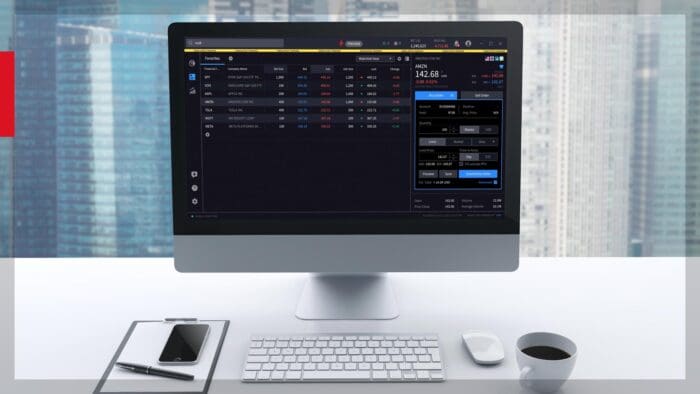Python libraries are the most useful part of the Python programming language. These libraries make the work of a programmer easy and quick. Each Python library is essential since each consists of a code that can be readily used for a particular purpose.
With this article on Python Libraries, we would be covering the most popular and widely used Python libraries for quantitative trading beginning with a basic introduction.
This blog covers:
- What are Python libraries?
- How are Python libraries useful for algorithmic trading?
- Popular libraries with categories for different functions
- Data fetching
- Data collection
- Data manipulation
- Technical analysis
- Machine learning
- Backtesting
- Plotting structures
- Open source Python trading platforms
What are Python libraries?
Python is a free open-source and cross-platform language which has a rich library for almost every task imaginable and also has a specialised research environment. Python is an excellent choice for automated trading in case of low/medium trading frequency, i.e. for trades which last more than a few seconds.
It has multiple APIs/Libraries that can be linked to make it optimal and allow greater exploratory development of multiple trade ideas. For example, we can get the historical market data through the Python Stock API.
A Python library is a collection of related modules. The libraries contain bundles of code that can be used repeatedly in different codes. The libraries make Python programming simpler and more convenient for the programmer as we don’t need to write the same code again and again for different programs. Python libraries play a very vital role in the fields of Machine Learning, Data Science, Data Visualization, etc.
How are Python libraries useful for algorithmic trading?
A library, usually, is a collection of books or a room or place where many books are stored to be used later.
Similarly, in the programming world, a library is a collection of precompiled codes that can be used later on in a code for some specific well-defined operations. Other than pre-compiled codes, a library may contain documentation, configuration data, message templates, classes, values, etc.
When we trade algorithmically, Python libraries can be used while coding for different trade-related functions.
For example, Yahoo Finance allows data access from any time series data CSV.
Most of the libraries can be installed with the following syntax:
pip install Python library name
or
!pip install Python library name
Popular libraries with categories for different functions
Now, we will discuss different popular Python libraries belonging to each category. So, let us begin!
Python libraries for data fetching
yFinance
yFinance is a library for fetching historical prices’ data of securities and their fundamental information from Yahoo Finance. In 2017, “Yahoo Finance” decommissioned its official data API. Ever since then, yFinance has become an alternative method to acquire financial data.
The yFinance usually fetches the OHLC data from Yahoo Finance and returns it in a data frame format.
Alpha Vantage
Similar to the yFinance, Alpha Vantage is another Python library that helps obtain the historical prices data as well as the fundamental data through the Alpha Vantage API.
One additional bonus of Alpha Vantage is that it also offers technical indicator data such as SMA, EMA, MACD, Bollinger Bands, etc.
Pandas-DataReader
In addition to the stock OLHC and fundamental data, the Pandas-DataReader allows to extract other alternative financial data such as the Federal Reserve Economic Data, Fama/French Data, World Bank Development Indicators, etc.
Summary: For fetching the historical OHLC data of stocks, yFinance, Alpha Vantage and Pandas-DataReader work the best. yFinance is simply a library for returning data, whereas, Alpha Vantage helps with the technical indicator data as well.
Going forward, Pandas-DataReader is usedful for the data needed from Federal Reserve Economic Data, Fama/French Data, World Bank Development Indicators, etc.
Python libraries for data collection
Trading on Interactive Brokers using Python
Interactive Brokers is an electronic broker which provides a trading platform for connecting to live markets using various programming languages including Python. It provides access to over 100 market destinations worldwide for a wide variety of electronically traded products including stocks, options, futures, forex, bonds, CFDs and funds. IB not only has very competitive commission and margin rates but also has a very simple and user-friendly interface.
There are a couple of interesting Python libraries which can be used for connecting to live markets using IB. You need to first have an account with IB to be able to utilise these libraries to trade with real money.
IBridgePy
IBridgePy library is an easy to use and flexible python library which can be used to trade with Interactive Brokers. It is a wrapper around IBridgePy’s API which provides a very simple to use solution while hiding IB’s complexities.
Summary: Interactive Brokers provides access to over 100 market destinations worldwide. It provides access to products such as stocks, options, futures, forex, bonds, CFDs and funds.
IBridgePy is used for trading with Interactive Brokers. It does not re-implement Interactive brokers’ API. Instead, it helps Python to call IB’s C++ API directly as it acts as a wrapper. Since IBridgePy calls on Interactive Broker’s C++ API directly, therefore, we can expect fewer errors and exceptions in the program.
Stay tuned for the next installment in this series to learn about Python libraries used for data manipulation.
For additional insight on this topic and to read the article originally posted on QuantInsti, visit https://blog.quantinsti.com/python-trading-library/.
Disclosure: Interactive Brokers Third Party
Information posted on IBKR Campus that is provided by third-parties does NOT constitute a recommendation that you should contract for the services of that third party. Third-party participants who contribute to IBKR Campus are independent of Interactive Brokers and Interactive Brokers does not make any representations or warranties concerning the services offered, their past or future performance, or the accuracy of the information provided by the third party. Past performance is no guarantee of future results.
This material is from QuantInsti and is being posted with its permission. The views expressed in this material are solely those of the author and/or QuantInsti and Interactive Brokers is not endorsing or recommending any investment or trading discussed in the material. This material is not and should not be construed as an offer to buy or sell any security. It should not be construed as research or investment advice or a recommendation to buy, sell or hold any security or commodity. This material does not and is not intended to take into account the particular financial conditions, investment objectives or requirements of individual customers. Before acting on this material, you should consider whether it is suitable for your particular circumstances and, as necessary, seek professional advice.
Disclosure: API Examples Discussed
Throughout the lesson, please keep in mind that the examples discussed are purely for technical demonstration purposes, and do not constitute trading advice. Also, it is important to remember that placing trades in a paper account is recommended before any live trading.
Disclosure: Order Types / TWS
The order types available through Interactive Brokers LLC's Trader Workstation are designed to help you limit your loss and/or lock in a profit. Market conditions and other factors may affect execution. In general, orders guarantee a fill or guarantee a price, but not both. In extreme market conditions, an order may either be executed at a different price than anticipated or may not be filled in the marketplace.
Disclosure: Margin Trading
Trading on margin is only for experienced investors with high risk tolerance. You may lose more than your initial investment. For additional information regarding margin loan rates, see ibkr.com/interest
Disclosure: Options Trading
Options involve risk and are not suitable for all investors. For information on the uses and risks of options, you can obtain a copy of the Options Clearing Corporation risk disclosure document titled Characteristics and Risks of Standardized Options by going to the following link ibkr.com/occ. Multiple leg strategies, including spreads, will incur multiple transaction costs.
Disclosure: Futures Trading
Futures are not suitable for all investors. The amount you may lose may be greater than your initial investment. Before trading futures, please read the CFTC Risk Disclosure. A copy and additional information are available at ibkr.com.














Join The Conversation
For specific platform feedback and suggestions, please submit it directly to our team using these instructions.
If you have an account-specific question or concern, please reach out to Client Services.
We encourage you to look through our FAQs before posting. Your question may already be covered!